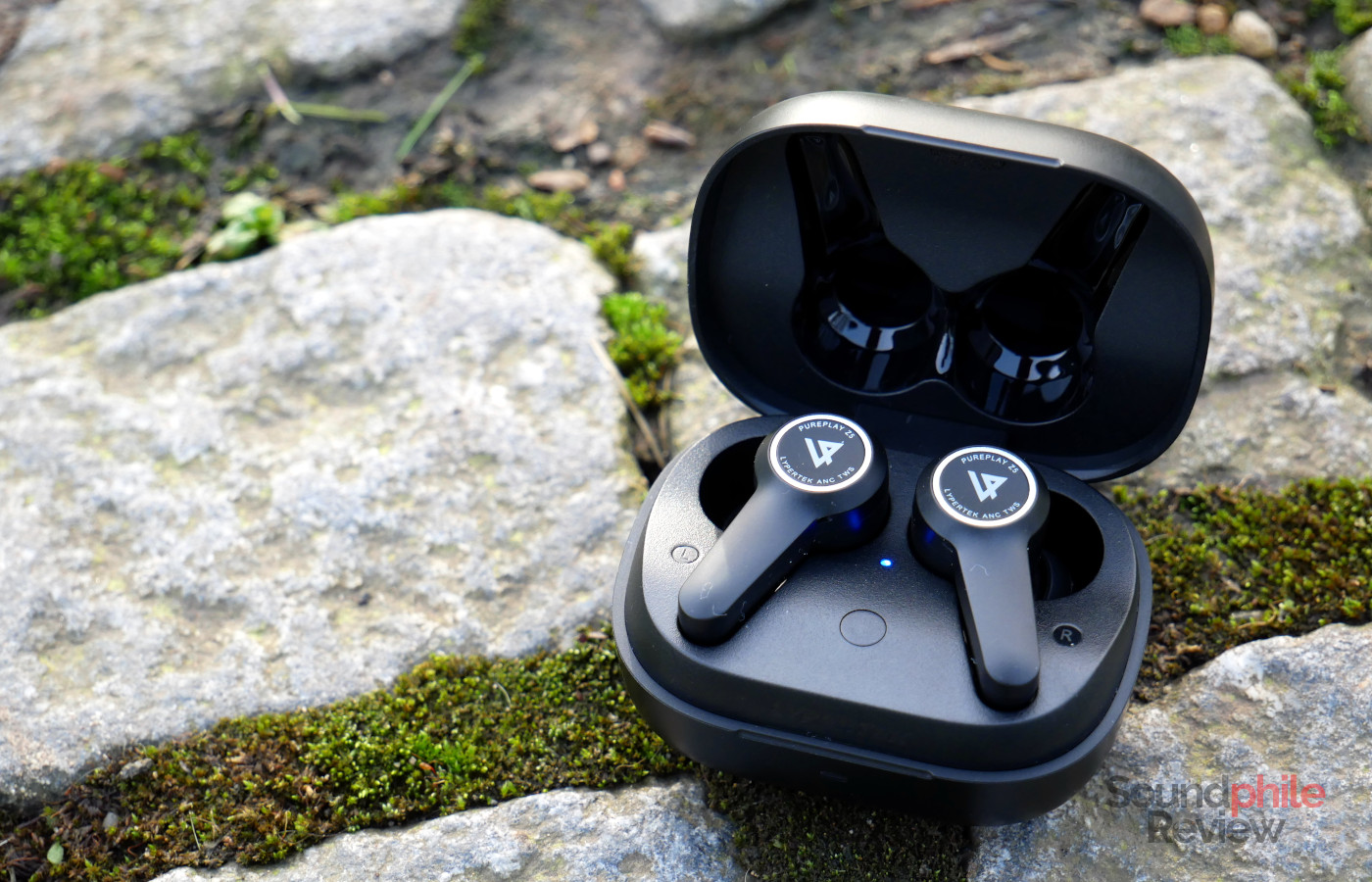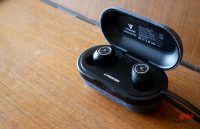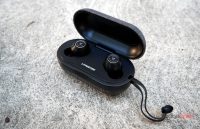With the PurePlay Z3 2.0 turning out to be a massive success, Lypertek is now back with a new model that further expands their line-up. The new Lypertek PurePlay Z5 is the first model by the company to feature active noise cancelling and to alter the classic design to embrace one with a stem. It’s quite a big departure from previous models by the company, but many of the fundamentals remain the same.
Disclaimer: thank you to John at KS Distribution for sending in a unit. Additional info is available on the official website. The PurePlay Z5 are also available on Amazon.com and Amazon UK. They retail for $/€/£ 99.
TL;DR: recap
| Pros |
Cons |
| + Very comfortable
+ Impressively stable and far-reaching connection + Great eartips set |
– Battery life not on par with competition
– Sound is a bit compressed |
Rating: 7.5/10
Packaging & Accessories
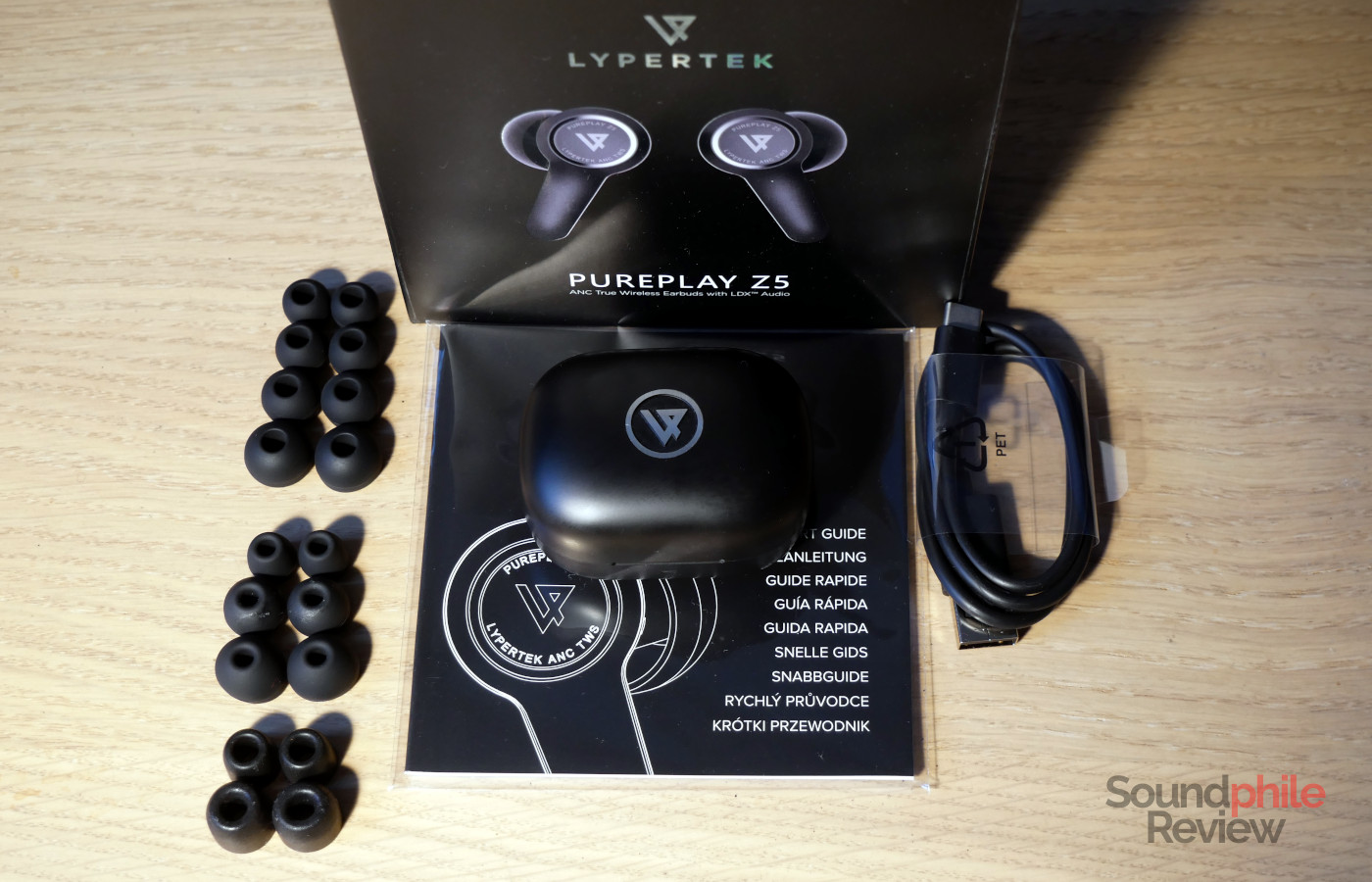
The Lypertek PurePlay Z5 come in a simple cardboard box with a magnetic latch; inside it are the earphones, their case, a USB to USB-C cable and a set of eartips which includes two pairs in foam (“PureComfort”), three pairs in silicone with small inner bore (“PurePower”) and five pairs in silicone with large inner bore (“PureSpace”). One thing to be noted about the eartips is that they have a circular inner bore, whereas the earphones’ nozzles are oval and they’re quite a bit larger than the eartips’ bore, making it sometimes difficult to fit them on.
Design & Comfort
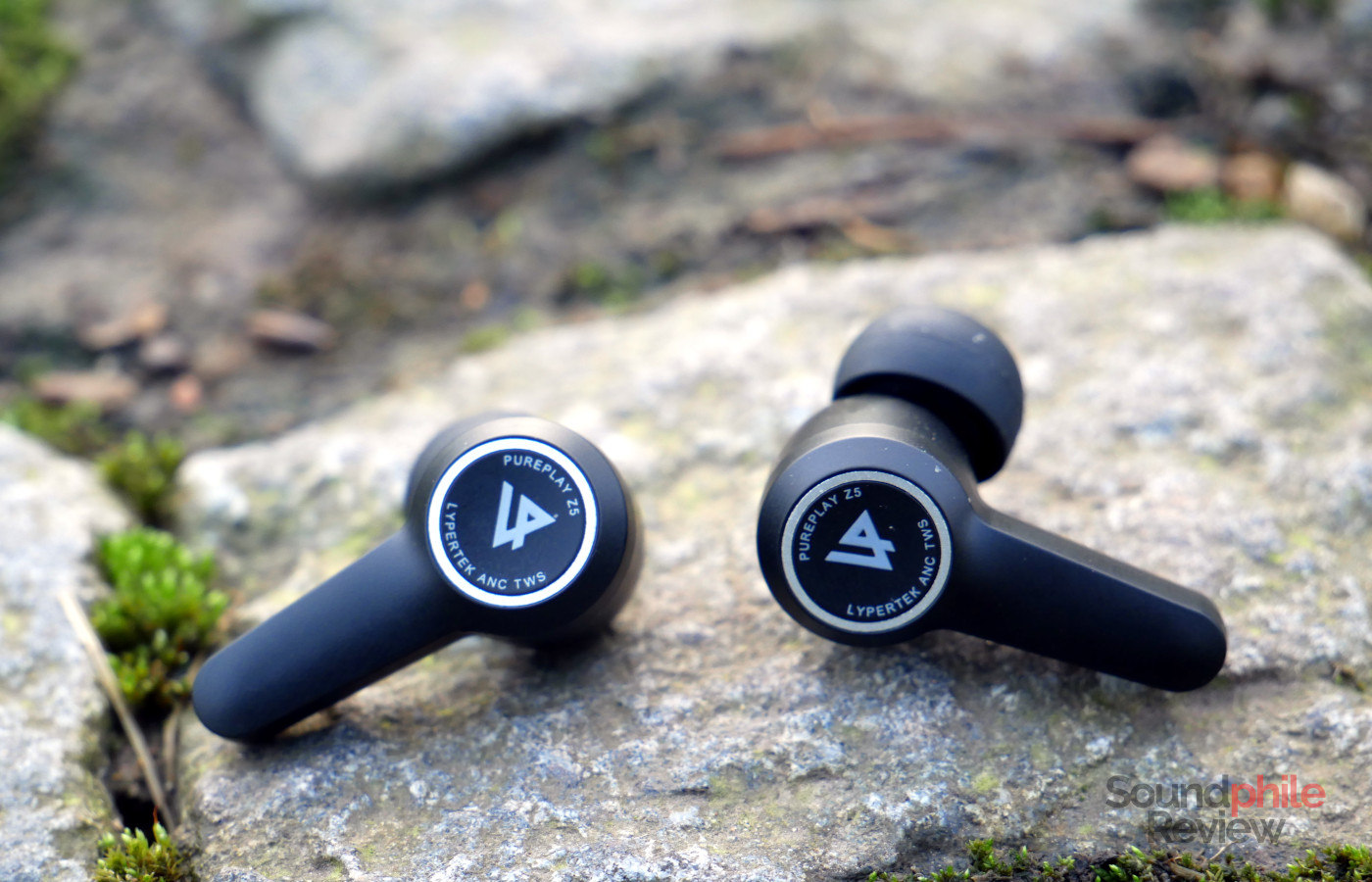
The Lypertek PurePlay Z5’s design is quite a big departure from that of previous models. The first and most noticeable change is that the earbuds now sport a stem, in contrast to all previous models that didn’t have one. One thing that Lypertek got right is the shape of the shell: contrary to many competitors, which make it so that the earphone have quite a shallow fit, Lypertek designed the PurePlay Z5 so that you can wear them either with a shallow fit or with a deeper insertion, based on what you like. This is made possible by the shape of the shell being bullet-like, with the stem that sits at a distance of a few millimetres from the nozzle, allowing you to wear the earphones the way you please.
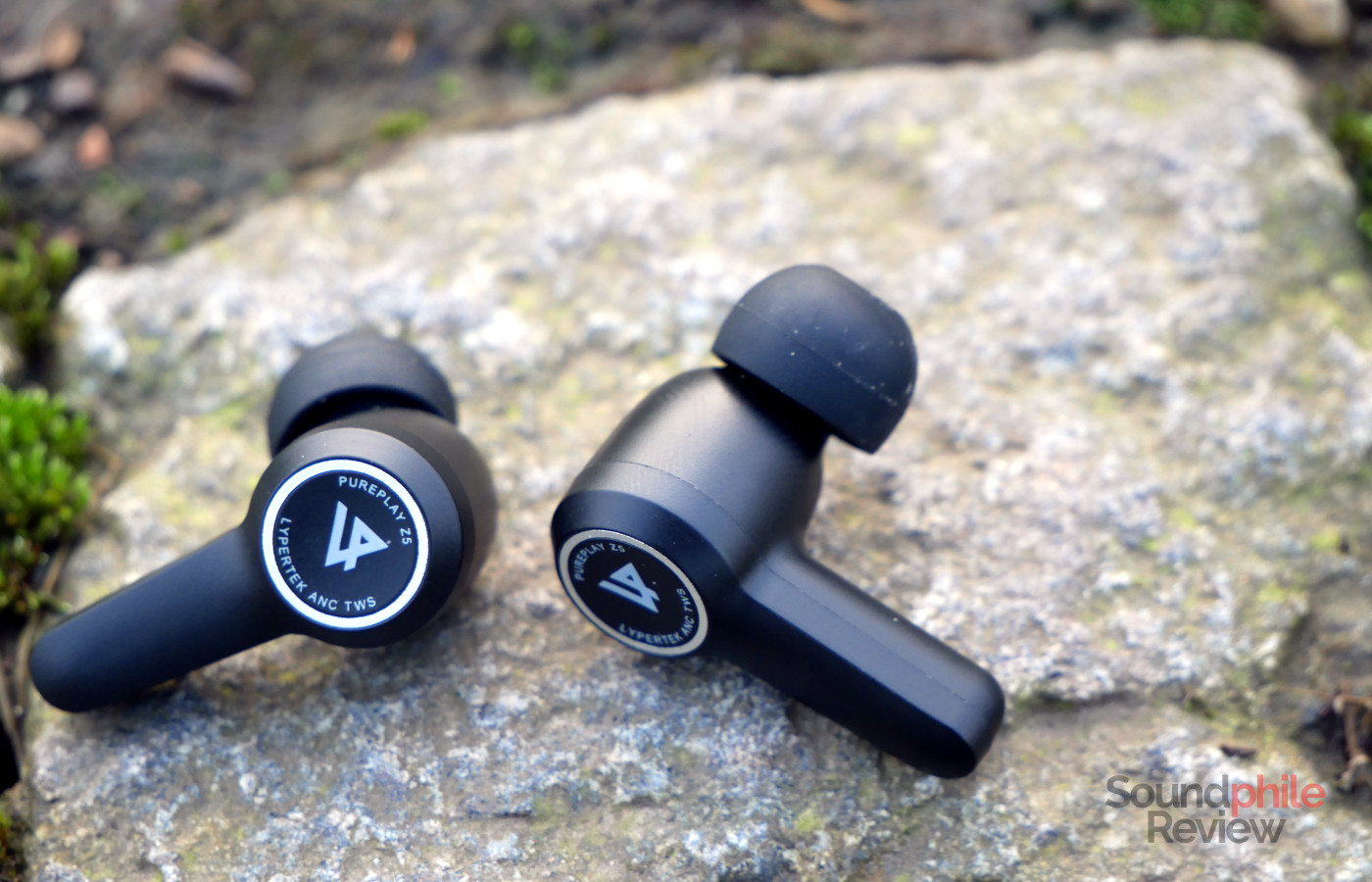
As usual with Lypertek products, the PurePlay Z5 offer good build quality, with shells made of seemingly resistant plastic. The earphones are IPX4 certified, which is a significant step down from previous earphones’ IPX7, but still enough to use them during workouts or under the rain.
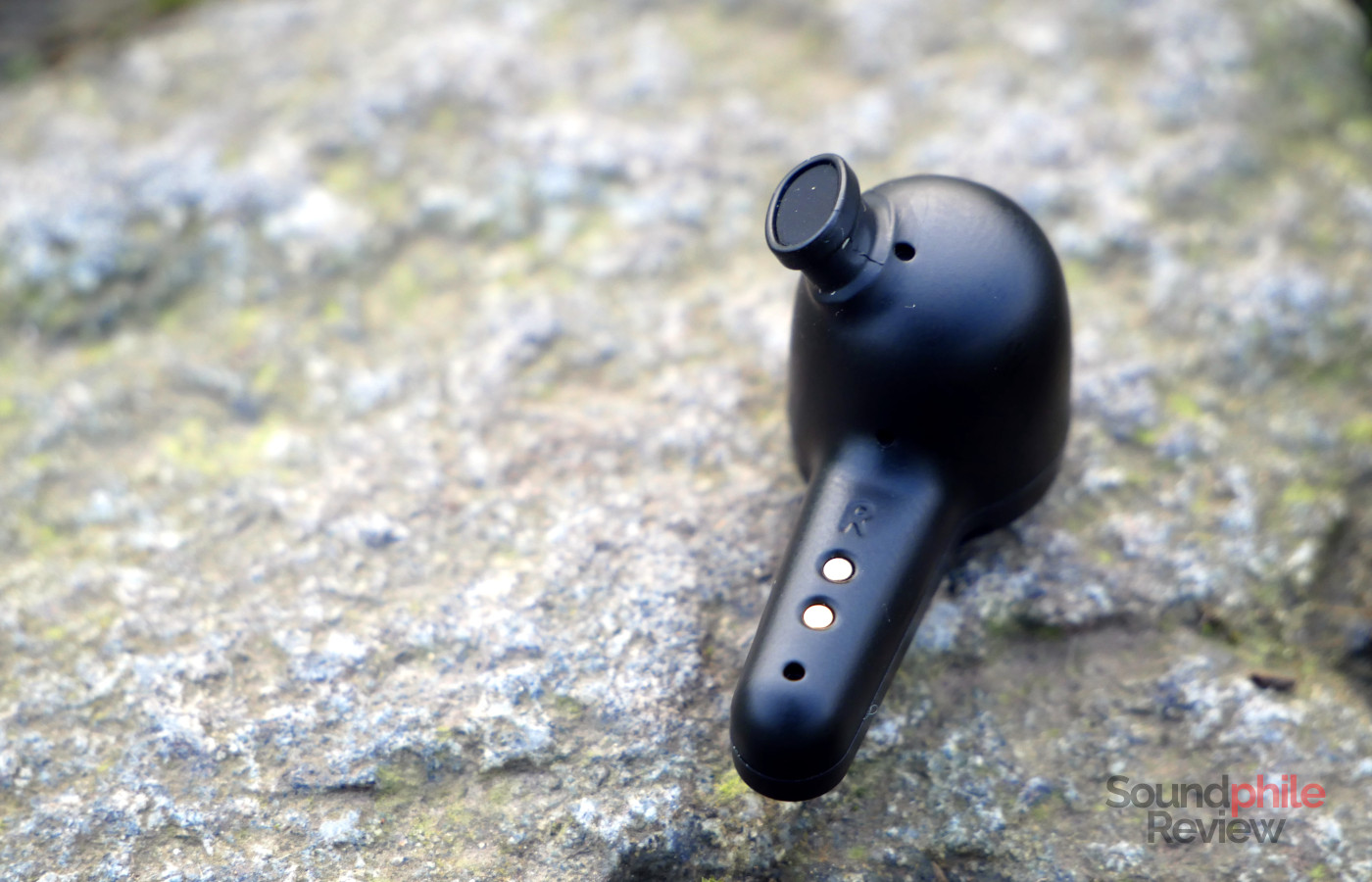
I found comfort to be excellent, thanks to the small size of the shells and to their roundness. I can wear the PurePlay Z5 for a while without even feeling them in my ears, which means most people will probably find them very comfortable as well.
Passive isolation is quite good and it is enough to shield you from most noises; as I type this I am wearing the earphones and I cannot hear my mechanical keyboard, which means isolation is good. In my experience, and this is a first for me, the silicone tips are the best ones, as the foam ones tend not to stick inside and create gaps that affect both isolation and frequency response.
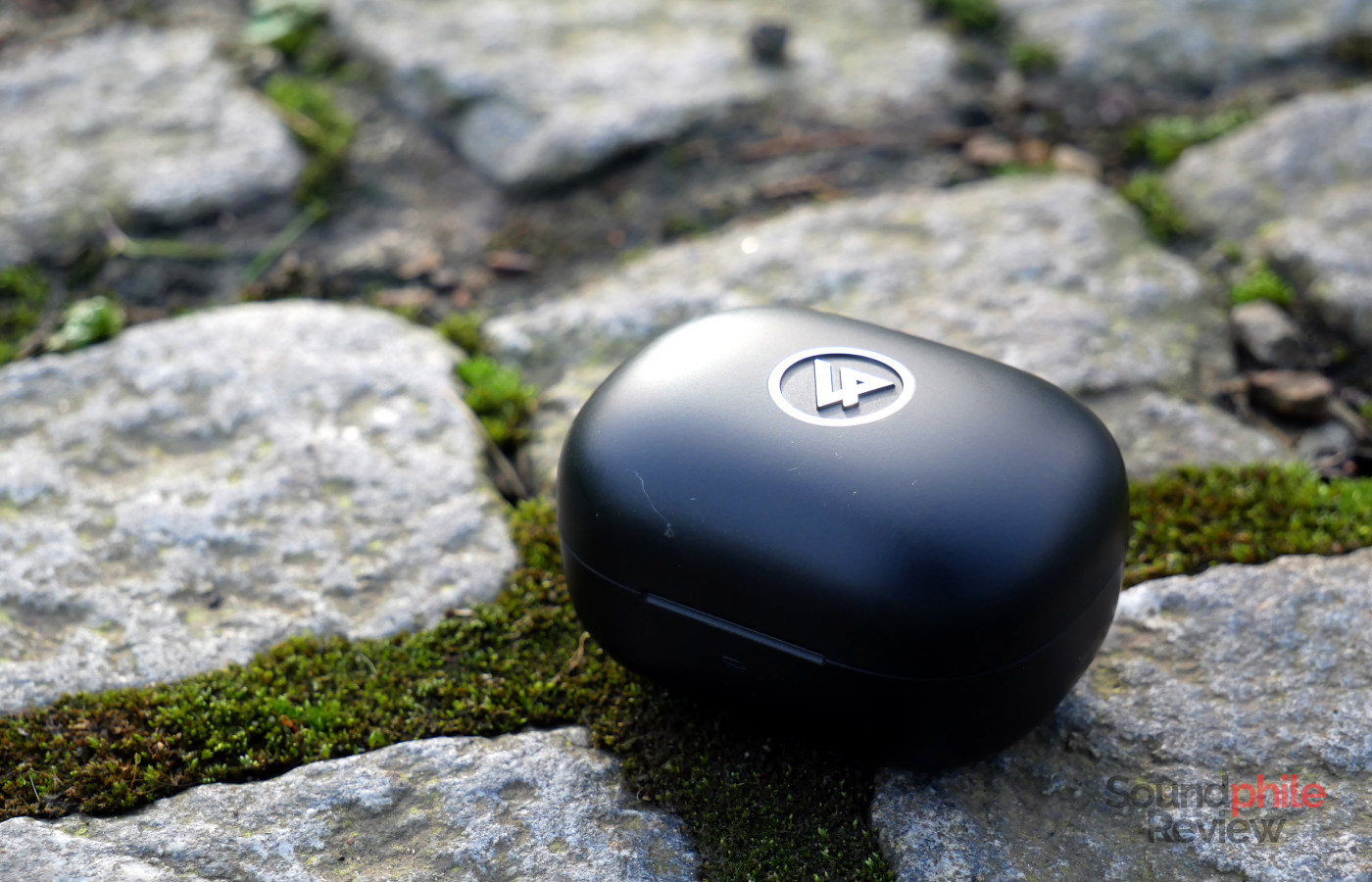
The case is another area where Lypertek has completely changed their design language. Gone is the oblong case covered in fabric; the new one is almost squared and appears much stockier than previous models. The case has this semi-matte finish that is a fingerprint magnet and unfortunately looks dirty in no time. On the other hand, though, it feels quite robust and practical. It has a USB-C port, plus a status LED on the outside as well as on the inside, where there is also a button to power on the earphones and verify the remaining charge. The earphones turn on automatically as soon as you open the lid and pair to the last connected device, so you can literally just take them out of the case and start listening to music – and as this works with my Linux desktop as well, you can be sure it works with basically any device out there! The only issue with the case is that it cannot be opened or closed with one hand: the lid is quite stiff and requires you to hold the case in one hand and to open the lid with the other.
Extra Features & Battery Life
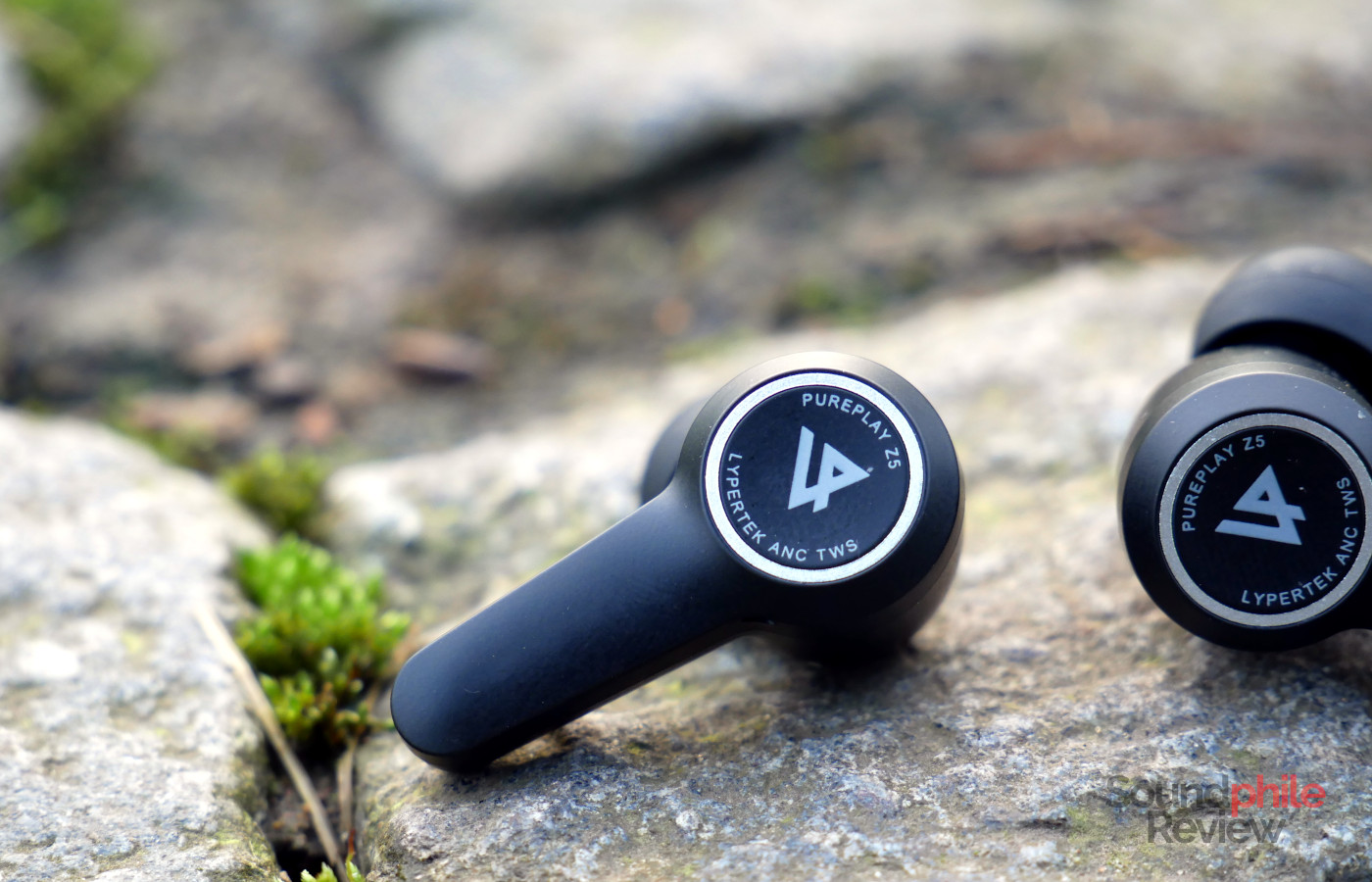
The Lypertek PurePlay Z5 offer a Bluetooth 5.2 connection with compatibility with the SBC, AAC aptX and aptX Adaptive codecs. It is quite interesting though that I couldn’t make it work with AAC; in fact, my computers (plural!) only report SBC and aptX as available codecs. Range is among the best I’ve seen in true wireless earphones: I can freely move around the house without any kind of stuttering or interruption. Stability is quite great, too.
As usual, Lypertek provided the PurePlay Z5 with a full set of controls that includes: one touch to play/pause/answer/hang up; two touches on the left hand side to go to the previous track and on the right hand side to go to the next one; three touches to lower or raise the volume (respectively left and right); a single touch followed by a long touch to invoke the voice assistant; a long touch to cycle between normal mode, noise cancelling and ambient mode. One thing I noticed is that it is quite easy to inadvertently touch the sensitive area and issue an unwanted command, and the only solution I’ve found to this is to pick the earphones by the stems, instead of using the shells themselves.
Another thing is that the lowest volume level I could get is still quite high on all the devices I’ve tried the PurePlay Z5 with. On my computers I have had to lower the volume of the application playing music as lowering the device’s volume was not enough.
ANC works well and it can remove all noises from around me when I’m at home (great for working!), but it is a bit less effective when I am outside, so I can still hear loud cars passing. What’s most important, though, is that it removes enough noise that I don’t have to raise the volume a lot for music to be audible, so I would say that the wanted result is actually achieved. Ambient mode works well, though it has the usual issue of reproducing sounds with a slightly tinny tone that gets fatiguing quite quickly.
The microphone works fairly well, but it’s not that great in noisy environments – it’s fine in a setting like a relatively quiet home or office.
The promise of 7 hours of playback without ANC are mostly realistic and so is the estimate of about four additional charges provided by the case. Turning on ANC will decrease battery life by quite a bit, though, as the figure will go down to about 4 hours: that’s not a lot compared to other competitors which can offer better stats – the SoundLiberty P10 Pro, as an example, offer 6 hours with ANC on.
Sound & Specs
I’ve mostly tested the Lypertek PurePlay Z5 using my computers as sources.
Lypertek PurePlay Z5 |
| Frequency response | 20 – 20,000 Hz |
| Impedance | N/A |
| Sensitivity | N/A |
| Bluetooth version | 5.2 |
| Codecs | SBC, AAC, aptX, aptX Adaptive |
Soundstage has decent lateral extension and, surprisingly, a bit of depth as well. It is not expansive by any means and, in fact, it sounds like you’re in a small room, even in wide-sounding tracks such as SCANN-TEC’s Parsec. Imaging is sufficient, with clear left-centre-right positions but not much more than that. Instrument separation is sufficient, but I always feel like clarity is lacking and the instruments aren’t as clearly defined and separated as they should.
Bass is definitely north of neutrality, but it is mostly out of the way in a good sense: you can definitely hear and feel it, but it never becomes dominant nor invasive. Depth is what impresses me the most, as it gets to the lowest frequencies with ease and helps giving bass more texture and (no pun intended) depth, as in “makes it richer”. In fact the lower frequencies get quite a bit of emphasis, as opposed to the usual mid-bass bump that would make bass bloated. It has quite a good punch, with a speed and relatively short decay that affords it good physicality even at low volume (which is quite good!). Detail, as a consequence, is also decent and is clearly audible even in crowded tracks.
Midrange appears to mark a return to a more Tevi-like tuning, which privileges midrange and makes it slightly bright, as one would expect in a Diffuse Field-like tuning. It appears Lypertek didn’t explicitly target a Diffuse Field curve, given the robust bass section, but it does bear some similarities as far as midrange is concerned. The other side of that coin is that there is a bit of sibilance, especially with female vocals, and a bit of “breathiness” as well. The mids do have good body overall, with a lower area that’s behind the upper one, but not so far back it sounds recessed or lacking. The level of detail is quite good and I like the speed especially, as drumbeats are dry and immediate.
Treble is quite present in the mix, lending it air and sparkle. It is clearly audible, yet it is not aggressive. It does have a couple of peaks in the middle area that make it a bit fatiguing at times. It has decent extension, which is the main reason why it does have that airy sensation to it. It does have limited detail, though, and it does sound a bit like a veil was on it – cymbals lack that incisiveness and clear definition that usually characterises them, so they sound splashy and smeared.
Lypertek PurePlay Z5 Comparisons
Let’s do a quick comparison:
- Lypertek PurePlay Z5 vs Lypertek PurePlay Z3 2.0: the PurePlay Z3 2.0 are, from a purely acoustic standpoint, much better than the Z5, as they are more balanced and more detailed. Bass is a bit more emphasised, especially in the mid-bass area, but it is more defined and faster, as well as better detailed. Midrange is also better balanced overall, despite being slightly warm, as there is less difference between the parts and in turn, this makes it devoid of sibilance and breathiness in the vocals; it is also more detailed and faster. Treble is more balanced, lacking the peaks of the Z5, and more detailed, with a final result that’s more enjoyable. Soundstage is slightly wider on the Z3 2.0, but deeper on the Z5; imaging is better on the Z3 2.0, as is instrument separation. The rest is similar, except of course for ANC being only present on the Z5.
- Lypertek PurePlay Z5 vs SoundLiberty P10 Pro: as they were quite a surprise to me, I thought I would throw in the P10 Pro in the mix. The truth is, though, that they don’t hold a candle to the Z5 from an acoustic perspective. They are far too unbalanced to even compete, with their invasive bass and treble plus recessed mids. I don’t want to be brutal in my judgement, but there’s simply no contest here. Where the P10 Pro excel is ANC and there the competition is fierce, as they do an even better job than the Z5. Still, the huge difference in acoustic performance makes the Z5 a preferable choice.
- Lypertek PurePlay Z5 vs Nothing ear(1): the Z5 are not quite the same as the ear(1), but there are similarities. Bass is deeper on the Z5, which also offer slightly better detail. Midrange is much brighter on the Z5, with a slightly sharp edge and sibilance that are not present on the ear(1). Treble is harsher on the ear(1), but there are peaks on both and the level of detail is similar, so the difference is not massive. Soundstage is wider and deeper on the Z5, which also has better imaging; instrument separation is similar, though the Z5 is slightly better at this. Overall, from an acoustic perspective, the Z5 is better, but not incredibly so, which is unexpected considering the sufficient performance of the ear(1).
Final Thoughts
The Lypertek PurePlay Z5 are the first in the manufacturer’s line-up to feature active noise cancellation, yet they are very good at that. Lypertek is off to a great start in this department, it seems, adding to that a new design that has its positives (comfort may have even been, however surprising that might seem, improved) and new touch controls that are easier to use than the previous models’ physical ones.
There are some other aspects which appear to need improvement, though. I am not really a fan of how they sound, due to the sound being sometimes compressed and muddy; while this tuning can probably serve a wider audience better, it is nowhere close to the first-generation Tevi in terms of technical ability and clarity. It is quite pleasant for listening to music on the go, but in this process of appealing to a wider public it has lost its uniqueness – it is the same U-shaped signature that countless other earphones sport, without anything truly significant going for it. It’s enjoyable and fun, but it’s not exceptional.
I quite enjoy the Lypertek PurePlay Z5 when I want a fun listening experience and I do recommend them to those who want that. Those who would prefer a more spacious, detailed and balanced offering would probably do better opting for the Tevi or for other similarly-tuned earphones. The Lypertek PurePlay Z5 are a compromise and a decent one at that: I do recommend them, but you will have to keep this fact in mind.

